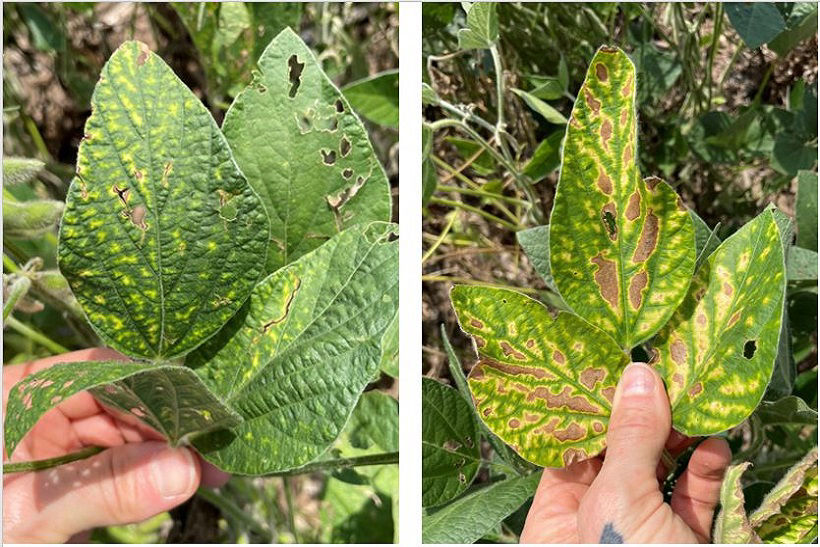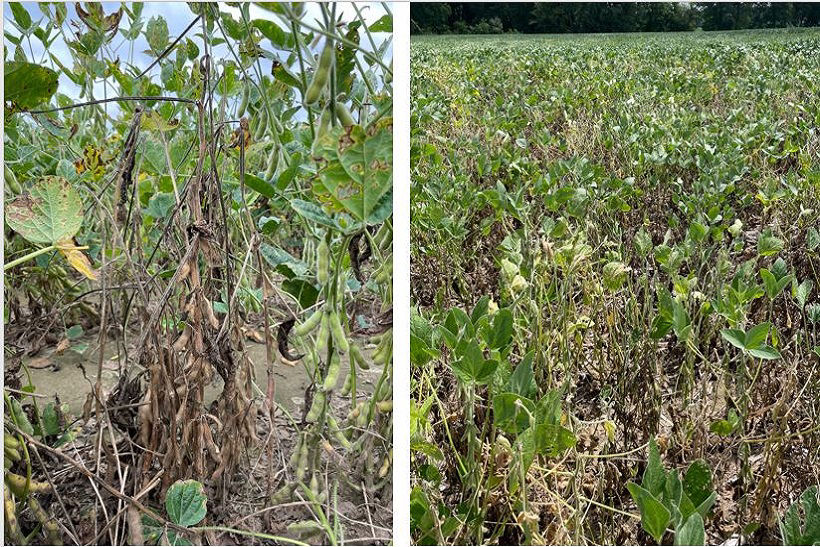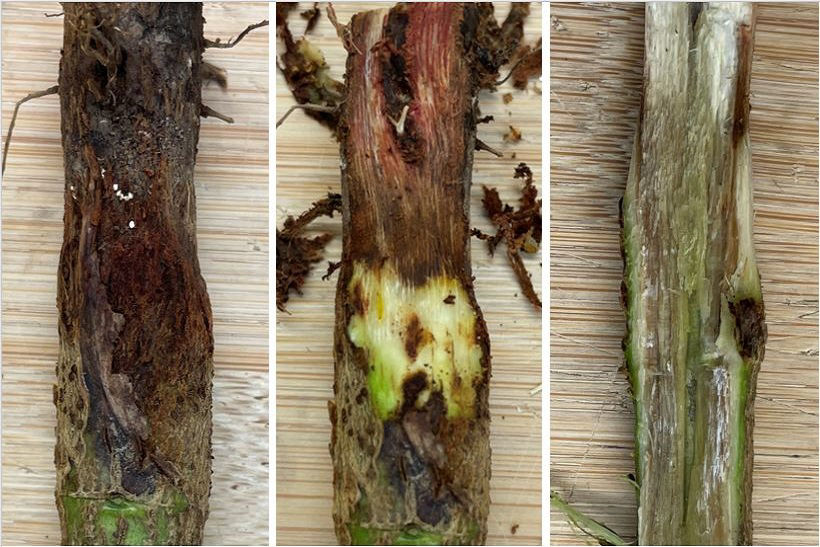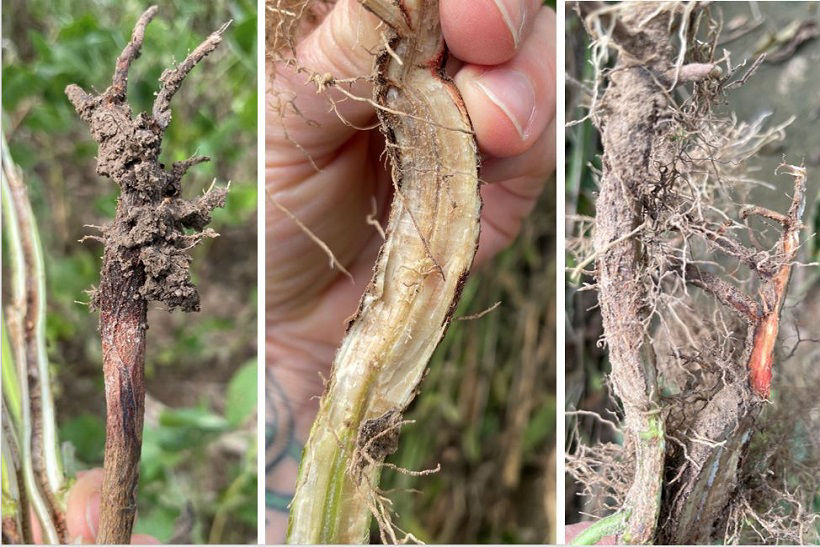Red Crown Rot in Soybean
October 30, 2023
Red crown rot (RCR) is a disease that typically occurs in the Delta and East Coast regions of the US where soybean is grown in rotation with peanut. Peanut suffers from Cylindrocladium black rot (CBR), a disease that is caused by the same fungus as soybean RCR. However, in contrast to CBR, RCR has received little interest since it was first described in 1973 due to low incidence in those regions and relatively negligible impact on yield. However, this changed when RCR was first reported in soybean in Illinois (2018) and then in Kentucky (2021), with yield losses of up to 30 bushels/acre.
RCR (and CBR) is caused by the fungus Calonectria ilicicola (syn. Cylindrocladium parasiticum), which survives as microsclerotia in crop residue and soil. The microsclerotia can persist for several years and can be spread locally by wind and farm equipment. As there is still little known about RCR, management relies on crop rotation (to reduce microsclerotia) and cultural practices like late planting and improved drainage to avoid conditions that favor infection and disease development. Rotation with peanut should be avoided.
How to identify RCR
Symptoms of RCR typically develop after R3 and will first develop in low-lying or poorly drained areas of the field. Foliar symptoms begin as areas of light-yellow discoloration that eventually progress to interveinal necrosis, chlorosis, leaf death, and defoliation (Figure 1). These symptoms are like those associated with sudden death syndrome, brown stem rot, and stem canker. RCR and stem canker can also result in plant death (Figure 2).


Stem symptoms begin with a reddish discoloration of the lower stem (Figure 3). The vascular tissue of the lower crown may show a brown to gray discoloration.1 A red discoloration can also occur, but the tissue below the epidermis will not be discolored (Figure 4).


If high levels of moisture occur late in the growing season, the discolored areas will exhibit white hyphae (thread-like fungal growth) and red to rusty-brown spore-bearing structures (perithecia) (Figure 5).

The roots of infected plants become rotted and the plants are easily pulled (Figure 6). Plants infected with RCR can experience root rot even without foliar symptoms. Infected plants can also be shorter than neighboring healthy plants. Stem symptoms can look like other stem diseases including charcoal rot, Rhizoctonia root rot, and Phytophthora stem rot.1

Sources
12019. Red crown rot of soybean. Crop Protection Network. https://cropprotectionnetwork.org/encyclopedia/red-crown-rot-of-soybean
1311_313626